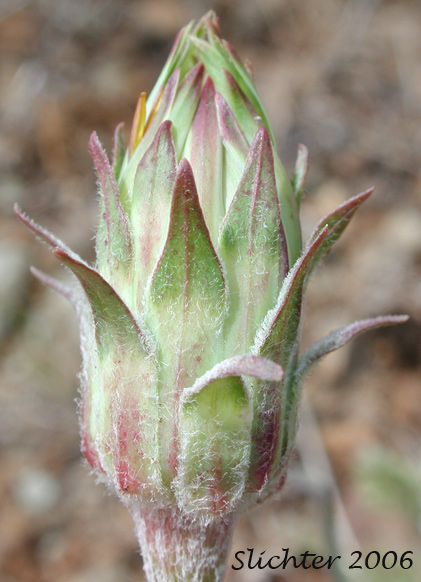 The photo at rights shows the flower head of
large-flowered agoseris prior to blooming. Photographed in the Columbia Hills in the Columbia River Gorge........June 3, 2006.
The photo at rights shows the flower head of
large-flowered agoseris prior to blooming. Photographed in the Columbia Hills in the Columbia River Gorge........June 3, 2006.
Large-flowered agoseris is a perennial with several basal leaves surrounding one or two stout, erect stems from 20-70 cm high. The basal leaves are oblanceolate to lance-elliptic to broadly linear with entire to deeply pinnatifid margins. The rachis of the leaf varies from narow to broad. Individual leaves range from 10-25 cm long and from 1-3 cm wide. The leaf lobes when present range from spreading to angled towards the leaf tip.
The large flower heads are many flowered although it is rare to see them open to any extent. The involucre ranges from 1.5-4 cm high when mature with broad, short outer bracts and lnger, narrower inner bracts (as seen in the photo at right). The flowers are yellowish and may turn pinkish upon drying. The corollas are approximately as long as the involucre. The fruit is tapered gradually to a beak, with the nerveless beak 2-4 times longer than the achene which is about 4-7 mm long.
Large-flowered agoseris may be found in meadows, grasslands, and other open areas from the lowlands to moderate elevations in the mountains.
Large-flowered agoseris may be found from British Columbia south to California and east to Idaho, Nevada and Utah.